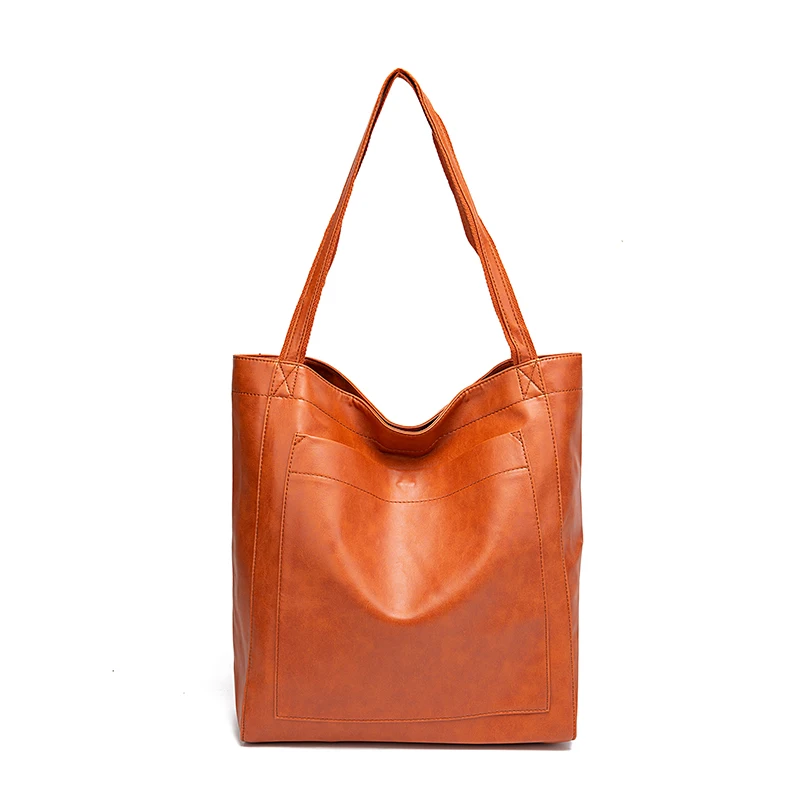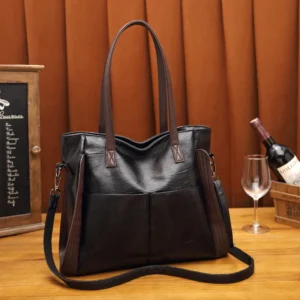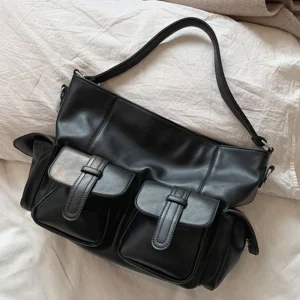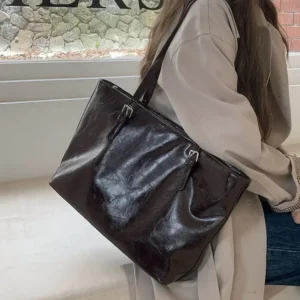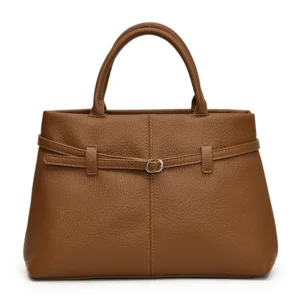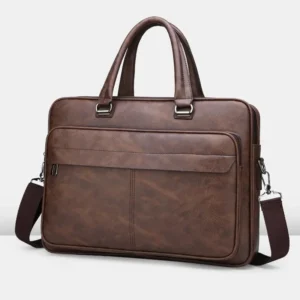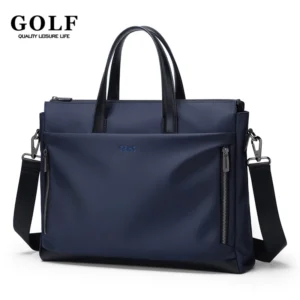Introduction: Understanding Faux Leather and Durability Expectations
Faux leather—also known as synthetic or vegan leather—has become increasingly popular as an alternative to genuine leather. This material offers consumers an appealing combination of affordability, ethical considerations, and stylish appearance without the use of animal products. As more people turn to these alternatives for their everyday bags and accessories, one question frequently arises: just how long can you expect a faux leather bag to last?
The truth is that durability varies significantly depending on several key factors. With proper care and depending on quality, most faux leather bags have a general lifespan ranging from 1-5 years of regular use. However, this broad range deserves a more nuanced explanation, as numerous elements influence how quickly your bag will show signs of wear.
Key considerations that impact faux leather durability include:
– The type and quality of faux leather used
– Manufacturing construction methods
– Your usage patterns and frequency
– Environmental exposure and storage practices
– Maintenance and care routines
Understanding these factors can help set realistic expectations and make informed purchasing decisions. If you’re considering alternatives, learning about timeless classic leather briefcases might provide helpful context for comparison.
Let’s dive deeper into what you can truly expect from your faux leather bag’s lifespan and how to maximize its durability.
The Real Lifespan of Faux Leather Bags: What to Expect
When shopping for a faux leather bag, understanding realistic lifespan expectations based on quality tier can help you make better purchasing decisions. The durability generally falls into three categories:
Budget Faux Leather Bags (1-2 years): These entry-level options typically use thinner materials with less durable coatings. With regular use, you’ll likely notice peeling, cracking at stress points, and color fading within the first year. Hardware may loosen, and stitching could begin to fail at stress points.
Mid-range Faux Leather Bags (2-4 years): With improved material quality and better construction, these bags offer reasonable durability for daily use. While they’ll eventually show similar wear patterns as budget options, the timeline extends significantly with proper care and maintenance.
Premium Faux Leather Bags (3-5+ years): High-end synthetic leather bags utilize superior materials, reinforced construction techniques, and better hardware. With appropriate care, these can remain functional and attractive for several years, making them comparable to lower-quality genuine leather in terms of lifespan.
How you use your bag dramatically impacts its durability. A bag used daily for commuting, carrying heavy items, or exposed to varying weather conditions will naturally wear faster than one used only occasionally for special events. Some faux leather bags last years longer than expected when treated with appropriate care and used moderately.
Understanding these general guidelines helps set realistic expectations, though individual results will vary based on specific care routines and usage patterns.
Types of Faux Leather and Their Durability Profiles
Not all faux leather is created equal. The specific material used in your bag significantly impacts how long it will last. Here’s a breakdown of the most common types and what you can expect from each:
PU (Polyurethane) Leather
PU leather consists of a fabric backing coated with polyurethane, a flexible plastic material. With an average lifespan of 2-5 years, it offers several advantages:
– Greater flexibility and softness than other synthetics
– Good water resistance
– Lightweight feel
– More breathable than PVC alternatives
However, PU leather typically begins peeling over time as the polyurethane layer separates from the backing material. This peeling often starts at high-friction areas like corners, handles, and strap attachments.
PVC (Polyvinyl Chloride) Leather
PVC leather combines a fabric backing with a polyvinyl chloride coating. With a typical lifespan of 1-3 years, PVC offers:
– Excellent water resistance
– Lower cost than PU options
– High stain resistance
The downsides include less flexibility, making it more prone to cracking rather than peeling. PVC tends to be less breathable and can feel stiffer than other alternatives. There are also environmental concerns regarding its production and disposal.
Microfiber Synthetic Leather
A premium option in the faux leather category, microfiber synthetic leather can last 5-7 years with proper care. Benefits include:
– Superior breathability
– More convincing leather-like texture and appearance
– Better resistance to peeling and cracking
– Increased flexibility and comfort
This advanced material typically comes with a higher price point but offers substantially improved durability compared to standard PU or PVC options.
Bio-based and Plant-based Alternatives
Innovative materials like apple leather (made from apple waste), mushroom leather, and Piñatex (created from pineapple leaf fibers) represent the cutting edge of vegan leather alternatives. While promising, these newer materials have varied durability profiles:
– Most offer 2-5 years of use with proper care
– They often combine natural fibers with polymers for stability
– Durability continues to improve as manufacturing techniques advance
Understanding how durable faux leather work bags are in professional settings requires considering not just the material type but also construction quality and daily usage demands.
Key Factors That Impact Your Faux Leather Bag’s Lifespan
Beyond the type of synthetic leather used, several critical factors determine how quickly your bag will show signs of aging:
Material Quality Factors:
– Thickness of the synthetic material (optimal is 1.0mm or greater)
– Quality of the backing fabric (tighter weaves provide better durability)
– Type and application of protective coatings (UV-resistant finishes extend lifespan)
– Colorfastness and dye quality (better dyes resist fading and transfer)
Construction Quality:
– Stitching techniques (double stitching at stress points indicates quality)
– Thread durability (nylon thread generally outlasts polyester or cotton)
– Hardware quality (solid metal components outlast plated plastic)
– Edge finishing methods (sealed and reinforced edges resist fraying)
– Interior lining materials (sturdy linings prevent structural deformation)
Usage Patterns:
– Weight routinely carried (heavier loads accelerate wear)
– Frequency of use (daily use versus occasional use)
– Storage practices (proper storage extends life significantly)
– Contact with abrasive surfaces (rough textures accelerate wear)
– Handling with dirty hands or exposure to makeup/oils
Environmental Factors:
– UV exposure (direct sunlight degrades synthetic materials rapidly)
– Humidity and temperature fluctuations (extreme changes cause material stress)
– Heat exposure (car dashboards and radiators can warp and crack faux leather)
– Exposure to rain or liquids (while initially resistant, repeated exposure damages backing)
When these factors combine negatively—such as a thin-quality material constructed poorly and used daily in harsh conditions—even an expensive faux leather bag might last just months rather than years. Conversely, a moderately priced bag with good construction that’s well cared for might exceed typical lifespan expectations.
For detailed guidance on maintaining your bag, exploring the ultimate guide to faux leather bag care can provide valuable techniques to extend its useful life.
Faux Leather vs. Genuine Leather: A Durability Comparison
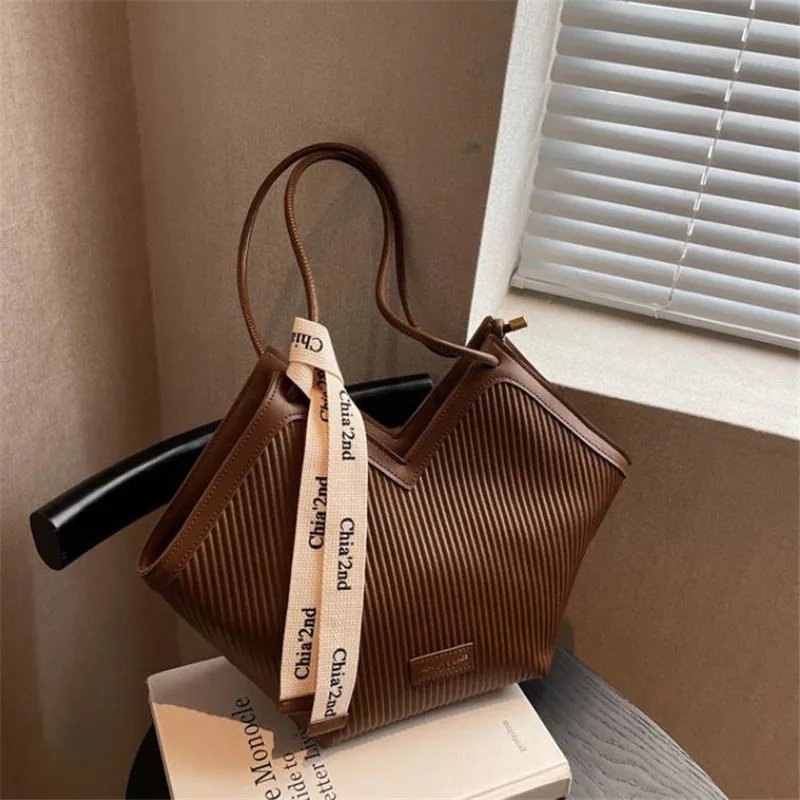
To truly understand faux leather’s durability, it helps to compare it with genuine leather across several important dimensions:
| Aspect | Faux Leather | Genuine Leather |
|---|---|---|
| Average Lifespan | 2-5 years | 10-20+ years with proper care |
| Initial Cost | Lower ($30-150) | Higher ($100-1000+) |
| Aging Process | Degrades (peeling, cracking) | Develops patina, often improves with age |
| Breathability | Limited | Excellent |
| Water Resistance | Initially good, decreases over time | Poor without treatment, improves with proper care |
| Repairability | Limited to none | Extensive repair options |
| Weight | Lighter | Heavier |
| Environmental Impact | Petroleum-based production concerns | Animal welfare and tanning concerns |
The most significant difference lies in how these materials age. While genuine leather develops character with use—softening and developing a desirable patina—faux leather eventually shows deterioration through peeling, cracking, and color changes that are generally considered undesirable.
From a cost perspective, genuine leather’s higher initial investment must be weighed against its significantly longer lifespan. A quality leather bag might cost 3-4 times more than a faux leather alternative but last 5-10 times longer. This creates an interesting cost-per-year calculation that often favors genuine leather for those planning long-term use.
However, for those who prefer faux leather vs real for daily use, considerations beyond durability—such as ethical concerns, specific aesthetic preferences, or budget constraints—often guide the purchasing decision. Both materials have their place depending on individual priorities and values.
Essential Care Methods to Extend Your Faux Leather Bag’s Life
Proper maintenance can significantly extend your faux leather bag’s useful life. Follow these essential care methods to maximize durability:
Daily Maintenance:
– Empty your bag completely each evening to relieve stress on seams
– Wipe the exterior with a soft, dry cloth to remove dust and oils
– Avoid overstuffing which strains seams and causes stretching
– Use the appropriate straps and handles as designed (avoid carrying by decorative elements)
– Rotate between multiple bags if possible to reduce daily wear on any single item
Cleaning Techniques:
– Spot clean as soon as spills occur using a damp cloth
– For general cleaning, wipe with a soft cloth dampened with mild soap solution (like diluted dish soap)
– Never use harsh chemicals, alcohol-based products, or leather conditioners
– Test any cleaning product on an inconspicuous area first
– Gently dry with a soft towel rather than using heat sources
Storage Best Practices:
– Store in a cool, dry place away from direct sunlight
– Stuff with tissue paper or an old t-shirt to maintain shape
– Use the dust bag that came with your purchase, or a pillowcase if unavailable
– Avoid hanging by handles which can cause stretching and distortion
– Keep away from heat sources like radiators or sunny windows
– Store in an upright position rather than folded or compressed
Preventative Measures:
– Apply a water-repellent spray designed specifically for synthetic materials (test first)
– Avoid setting your bag on rough surfaces that might scratch the finish
– Keep away from makeup, hand sanitizers, and oils which can stain and degrade the coating
– Use a protective liner when carrying potentially leaky items
– During rain, cover your bag or keep it under your coat
For professional settings where appearance matters significantly, investing in quality faux leather work totes designed with durability in mind can provide both style and longevity.
Warning Signs: When Your Faux Leather Bag Is Approaching Its End
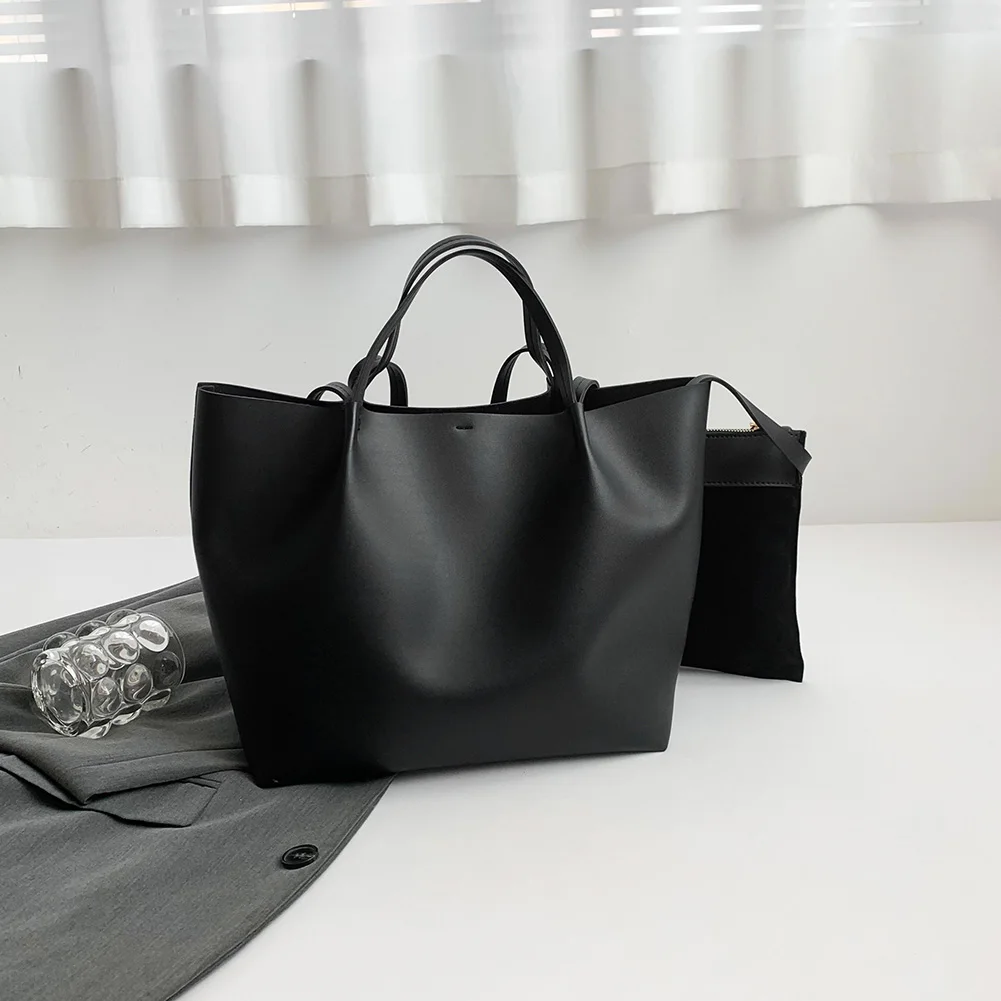
Recognizing the warning signs of deterioration helps you determine when repair might be possible or when replacement becomes necessary:
Peeling and Flaking:
The most common sign of faux leather deterioration is peeling, which typically begins as small flecks of material coming off at corners and edges. Once peeling starts, it generally progresses rapidly. Early stages might be manageable, but extensive peeling indicates the bag is nearing the end of its useful life. This issue commonly appears first on handles, strap attachments, and bottom corners.
Cracking and Brittleness:
When faux leather loses its flexibility and begins to crack, structural integrity is compromised. Look for fine lines appearing at flex points—particularly around handles, opening edges, and folds. These cracks typically appear after extended exposure to temperature fluctuations or UV light. Once cracking begins, the material has undergone chemical changes that cannot be reversed.
Color Changes and Fading:
Significant color changes indicate UV damage or coating deterioration. Watch for:
– Uneven fading (particularly on sides exposed to sun)
– Color transfer onto clothing or hands (indicates coating breakdown)
– Yellowing or darkening of originally light-colored areas
– Patchy appearance where the color has worn away unevenly
Structural Failures:
Beyond surface issues, check for structural integrity problems:
– Loosening thread at seams or decorative elements
– Hardware becoming detached or showing excessive movement
– Handle attachments pulling away from the bag body
– Significant shape distortion or sagging even when properly stuffed
– Interior lining tears or separation from the outer material
Odor Development:
Unusual odors often indicate material breakdown:
– Chemical smells can develop as synthetic materials degrade
– Musty odors might signal mold growth in the backing fabric
– Persistent unpleasant smells despite cleaning suggest interior damage
When these warning signs become pronounced, it may be time to explore vegan leather work tote options as replacements. While minor issues might be manageable through DIY fixes, extensive deterioration typically means the bag has reached the end of its serviceable life.
Choosing a Durable Faux Leather Bag: What to Look For
When shopping for a new faux leather bag with durability in mind, use this checklist to identify higher-quality options:
Material Selection Guidelines:
– Look for thicker faux leather (ideally 1.0mm or greater)
– Seek out microfiber-based synthetic leather when possible
– Check for tight, even texture across the entire surface
– Examine backing material quality by looking inside unlined portions
– Confirm the material feels substantial rather than thin or papery
– Choose matte or semi-matte finishes which typically last longer than high-gloss options
Construction Quality Markers:
– Examine stitching for evenness, tightness, and reinforcement at stress points
– Look for double stitching along handles, straps, and bottom seams
– Check that hardware is securely attached with reinforced mounting points
– Confirm zipper quality with smooth operation and metal (not plastic) teeth
– Verify edge finishing is sealed rather than raw or simply folded
– Assess lining material—quilted or sturdy fabric indicates quality construction
Brand Research Strategy:
– Review warranty terms (longer warranties often indicate manufacturer confidence)
– Research customer reviews specifically mentioning long-term use
– Look for brands specializing in professional or business accessories
– Check for companies with repair services or replacement policies
– Consider brand history and reputation for quality control
Price-Quality Relationship:
– Set realistic expectations based on price point ($30-50 bags won’t last as long as $100+ options)
– Invest more in bags you’ll use daily versus occasional-use items
– Prioritize spending on quality construction over decorative elements
– Be wary of extreme bargains, which often indicate quality compromises
When durability is your priority, exploring durable non-leather professional bags can provide insights into materials and construction techniques that maximize longevity while maintaining a professional appearance.
Is High-Quality Faux Leather Worth the Investment? Making the Right Choice
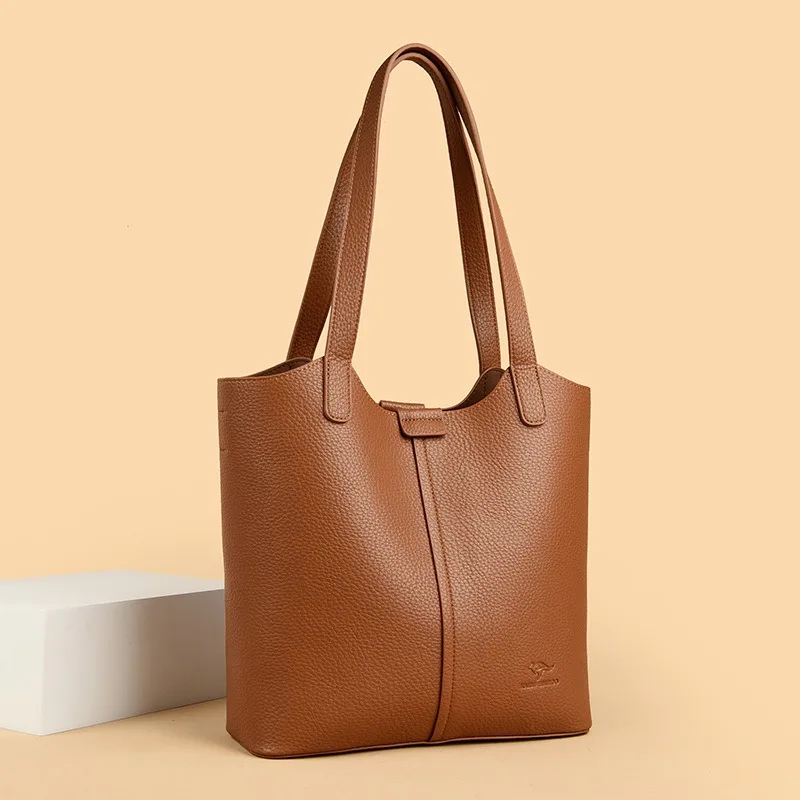
Deciding whether premium faux leather deserves the higher price requires evaluating several personal factors:
Value Assessment Framework:
– Initial Investment: Premium faux leather bags typically cost $100-200 versus $30-70 for budget options
– Expected Longevity: High-quality options often last 3-5 years versus 1-2 years for budget alternatives
– Cost Per Year: A $150 bag lasting 4 years ($37.50/year) may be more economical than a $50 bag lasting 1 year
– Ethical Priorities: For those avoiding animal products, premium faux leather offers the best non-leather durability
– Style Considerations: Better faux leather maintains its appearance longer, looking professional for more of its lifespan
When Premium Faux Leather Makes Sense:
– For daily-use professional bags where appearance matters consistently
– When ethical considerations make animal leather unacceptable
– For specific style requirements only available in synthetic materials
– When moderate durability (3-5 years) meets your replacement timeline preferences
– For those preferring lower maintenance requirements versus genuine leather
When Genuine Leather Might Be the Better Long-Term Investment:
– For those seeking decades rather than years of use
– For users who appreciate how leather develops character with age
– When repairability is a priority (genuine leather can be restored multiple times)
– For heritage items intended to be passed down or retained for many years
– When cost-per-year over a 10+ year timeline is the primary consideration
Black Leather Satchel, Brown Leather Satchel, Vegan Leather Work Tote
Price range: $69.58 through $73.23 Select options This product has multiple variants. The options may be chosen on the product pageBlack Leather Messenger Bag, Black Leather Work Tote, Faux Leather Work Tote
$101.88 Select options This product has multiple variants. The options may be chosen on the product pageBlack Leather Work Tote, Faux Leather Work Tote, Women's Leather Business Tote
Price range: $88.81 through $93.85 Select options This product has multiple variants. The options may be chosen on the product pageBlack Leather Satchel, Faux Leather Work Tote, Vegan Leather Work Tote
$120.38 Select options This product has multiple variants. The options may be chosen on the product pageMen's Slim Leather Briefcase, Slim Leather Laptop Briefcase, Vegan Leather Briefcase
Price range: $120.82 through $131.11 Select options This product has multiple variants. The options may be chosen on the product pageClassic Laptop Briefcase, Vegan Leather Briefcase
$244.29 Select options This product has multiple variants. The options may be chosen on the product page
When professional appearance matters but animal leather isn’t an option, exploring professional vegan leather briefcases can provide solutions that balance ethics with durability needs. Your personal values, budget constraints, and usage patterns should guide this decision more than any universal recommendation.
Frequently Asked Questions About Faux Leather Durability
Can damaged faux leather be repaired?
Unlike genuine leather, faux leather has limited repair options. Minor peeling or small tears can sometimes be addressed with vinyl repair kits, but these fixes are typically temporary and visible. Once extensive peeling begins, repair becomes impractical. Small scratches can sometimes be minimized with petroleum jelly, while tears might be manageable with fabric glue for short-term solutions. However, significant damage generally means replacement is necessary.
Do certain brands of faux leather last significantly longer?
Yes, brand quality variations can be substantial. Established brands specializing in professional bags often use superior materials and construction techniques. While price often correlates with quality, some mid-range brands outperform expectations through better material sourcing and construction standards. Brands focusing on professional work bags typically invest more in durability than fashion-focused labels.
How can I tell if a faux leather bag will last before purchasing?
When shopping in person, examine thickness by gently pinching the material (thicker is better), check for tight stitching with no loose threads, test hardware functionality, and assess overall weight (heavier often indicates better materials). For online purchases, look for detailed material descriptions, read reviews specifically mentioning durability, check for clear hardware and construction photos, and verify the return policy.
Is vegan leather always the same as faux leather?
While often used interchangeably, these terms can sometimes indicate differences. All vegan leather is non-animal, but not all faux leather is marketed as “vegan.” Some products labeled specifically as vegan leather may use newer plant-based materials like apple leather, mushroom leather, or Piñatex rather than traditional PVC or PU. The term “vegan leather” sometimes (but not always) signals a product designed with both ethics and quality in mind.
What’s the environmental impact of faux leather’s shorter lifespan?
The shorter lifespan of faux leather creates environmental challenges through increased consumption and waste. Most synthetic leathers are petroleum-based and don’t biodegrade, remaining in landfills for decades. While they avoid animal farming impacts, their production involves chemicals and fossil fuels. However, newer bio-based alternatives are improving sustainability, though often with durability tradeoffs. For environmentally-conscious consumers, investing in the highest-quality faux leather to maximize lifespan can help reduce overall consumption impact.
For professionals seeking options that balance ethics, durability and style, exploring perfect professional vegan leather bags can provide alternatives that minimize environmental impact while maintaining a professional appearance.
Poise Porter offers various options designed to meet the needs of modern professionals who prioritize both ethics and durability in their work accessories.

